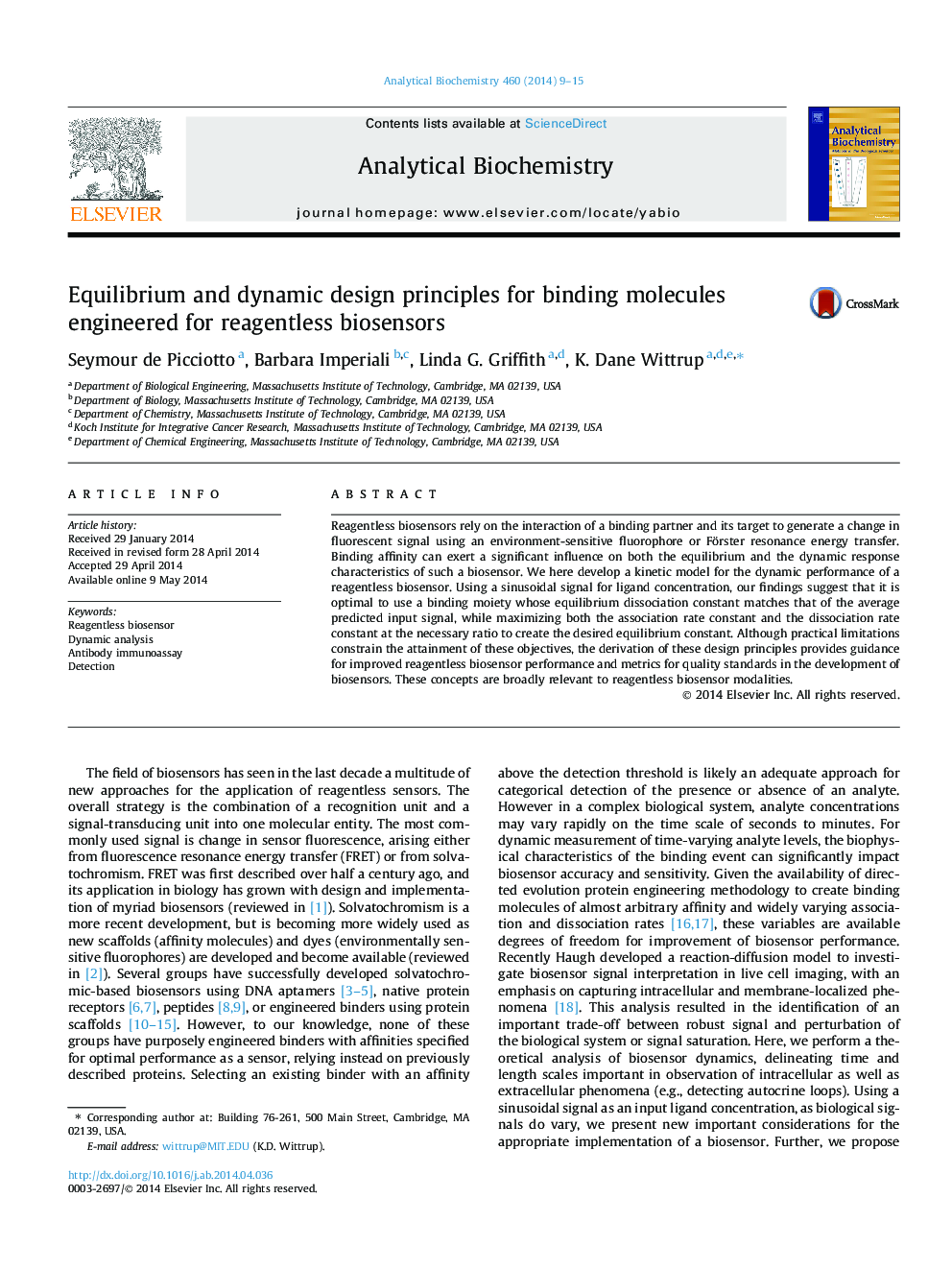| Article ID | Journal | Published Year | Pages | File Type |
|---|---|---|---|---|
| 1173656 | Analytical Biochemistry | 2014 | 7 Pages |
Reagentless biosensors rely on the interaction of a binding partner and its target to generate a change in fluorescent signal using an environment-sensitive fluorophore or Förster resonance energy transfer. Binding affinity can exert a significant influence on both the equilibrium and the dynamic response characteristics of such a biosensor. We here develop a kinetic model for the dynamic performance of a reagentless biosensor. Using a sinusoidal signal for ligand concentration, our findings suggest that it is optimal to use a binding moiety whose equilibrium dissociation constant matches that of the average predicted input signal, while maximizing both the association rate constant and the dissociation rate constant at the necessary ratio to create the desired equilibrium constant. Although practical limitations constrain the attainment of these objectives, the derivation of these design principles provides guidance for improved reagentless biosensor performance and metrics for quality standards in the development of biosensors. These concepts are broadly relevant to reagentless biosensor modalities.
